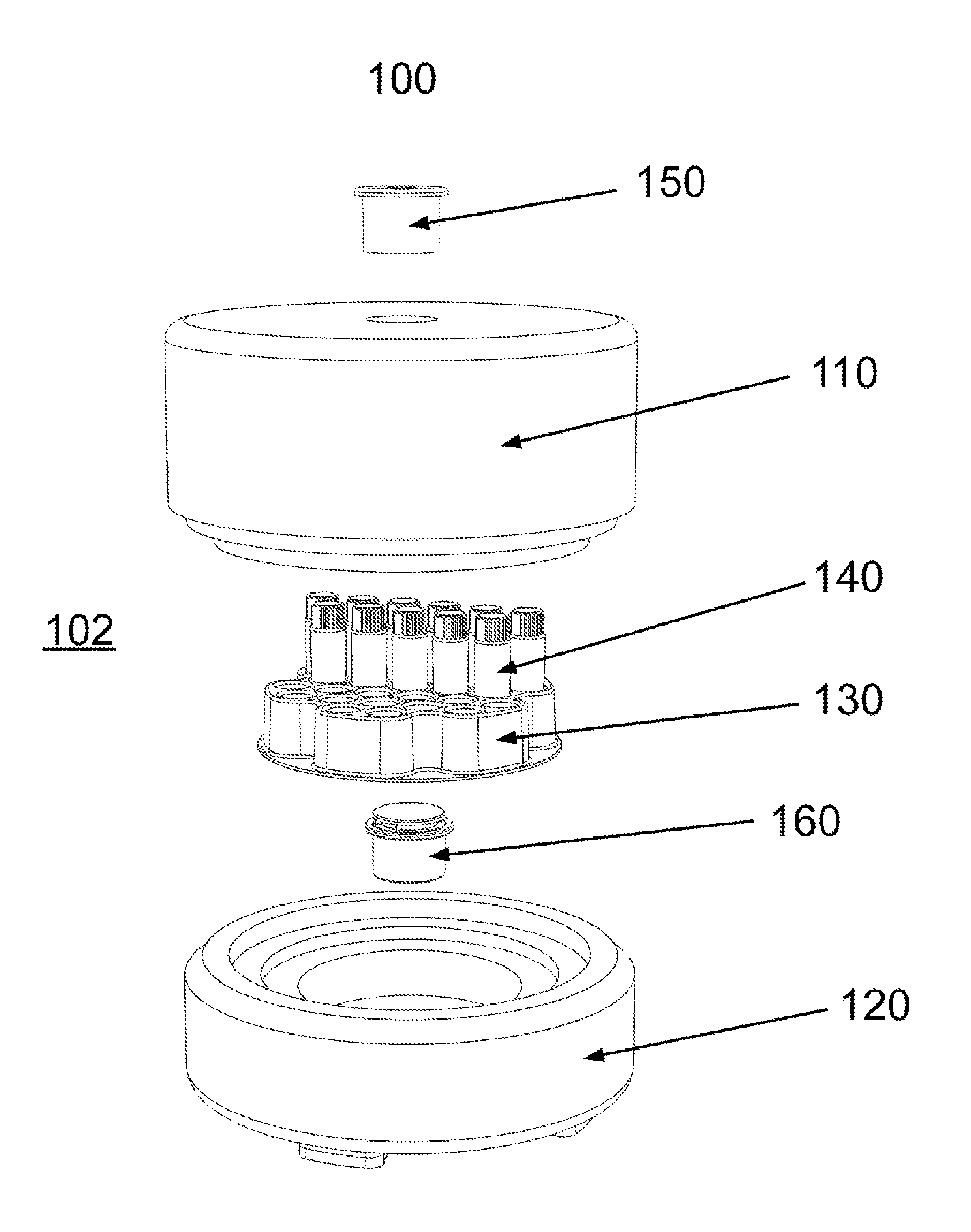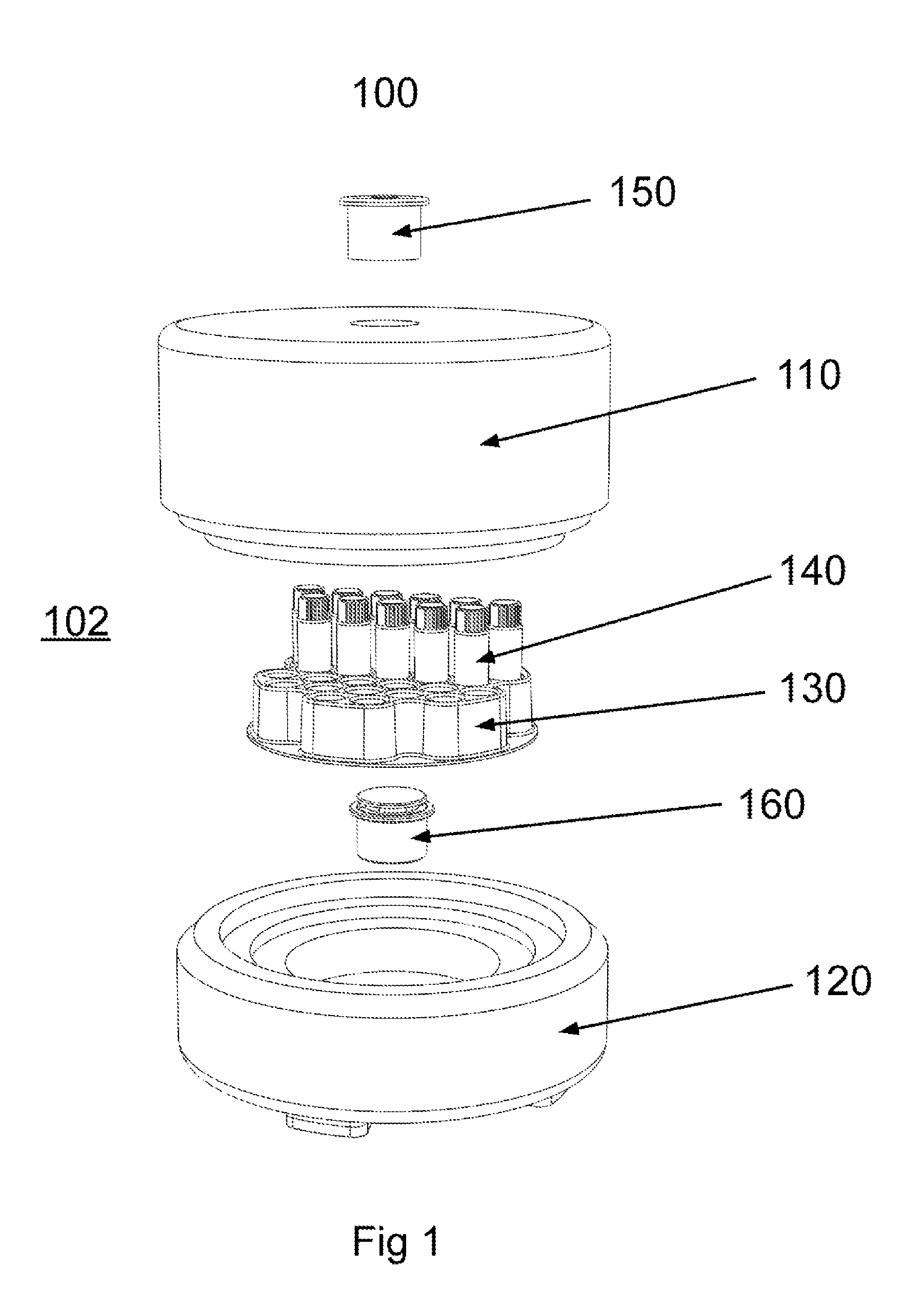Ventilation assisted passive cell freezing device
a cell freezing and passive technology, applied in the field of passive cell freezing devices, can solve the problems of imposing an even greater imbalance in the freezing rate between the exterior and interior vials of the cluster, the need for a circular array, and the need for samples to be transferred to archival storage, so as to maximize the exposure of the sample vial, maximize the contact, and maximize the effect of surface conta
- Summary
- Abstract
- Description
- Claims
- Application Information
AI Technical Summary
Benefits of technology
Problems solved by technology
Method used
Image
Examples
Embodiment Construction
[0021]The present invention will be described with regard to the accompanying drawings, which assist in illustrating various features of the invention.
[0022]Referring now to FIG. 1, a sample freezing apparatus 100 is shown. Sample freezing apparatus 100 generally comprises an enclosure having an internal, insulating chamber in which a removable rack 130 is placed and enclosed. The insulating chamber of sample freezing apparatus 100 generally comprises a thermo-insulating material, such as polyethylene, polystyrene, or polyurethane foam materials. The insulating chamber may further include additional materials to enhance or otherwise optimize the insulating needs of the device. For example, apparatus 100 may comprise additional internal or external insulating material to provide additional insulation. Alternatively, apparatus 100 may comprise one or more compartments or lines for the addition of a cooling agent, such as liquid nitrogen or a pre-cooled ballast mass.
[0023]In some embod...
PUM
| Property | Measurement | Unit |
|---|---|---|
| height | aaaaa | aaaaa |
| height | aaaaa | aaaaa |
| thickness | aaaaa | aaaaa |
Abstract
Description
Claims
Application Information
 Login to View More
Login to View More - R&D
- Intellectual Property
- Life Sciences
- Materials
- Tech Scout
- Unparalleled Data Quality
- Higher Quality Content
- 60% Fewer Hallucinations
Browse by: Latest US Patents, China's latest patents, Technical Efficacy Thesaurus, Application Domain, Technology Topic, Popular Technical Reports.
© 2025 PatSnap. All rights reserved.Legal|Privacy policy|Modern Slavery Act Transparency Statement|Sitemap|About US| Contact US: help@patsnap.com



